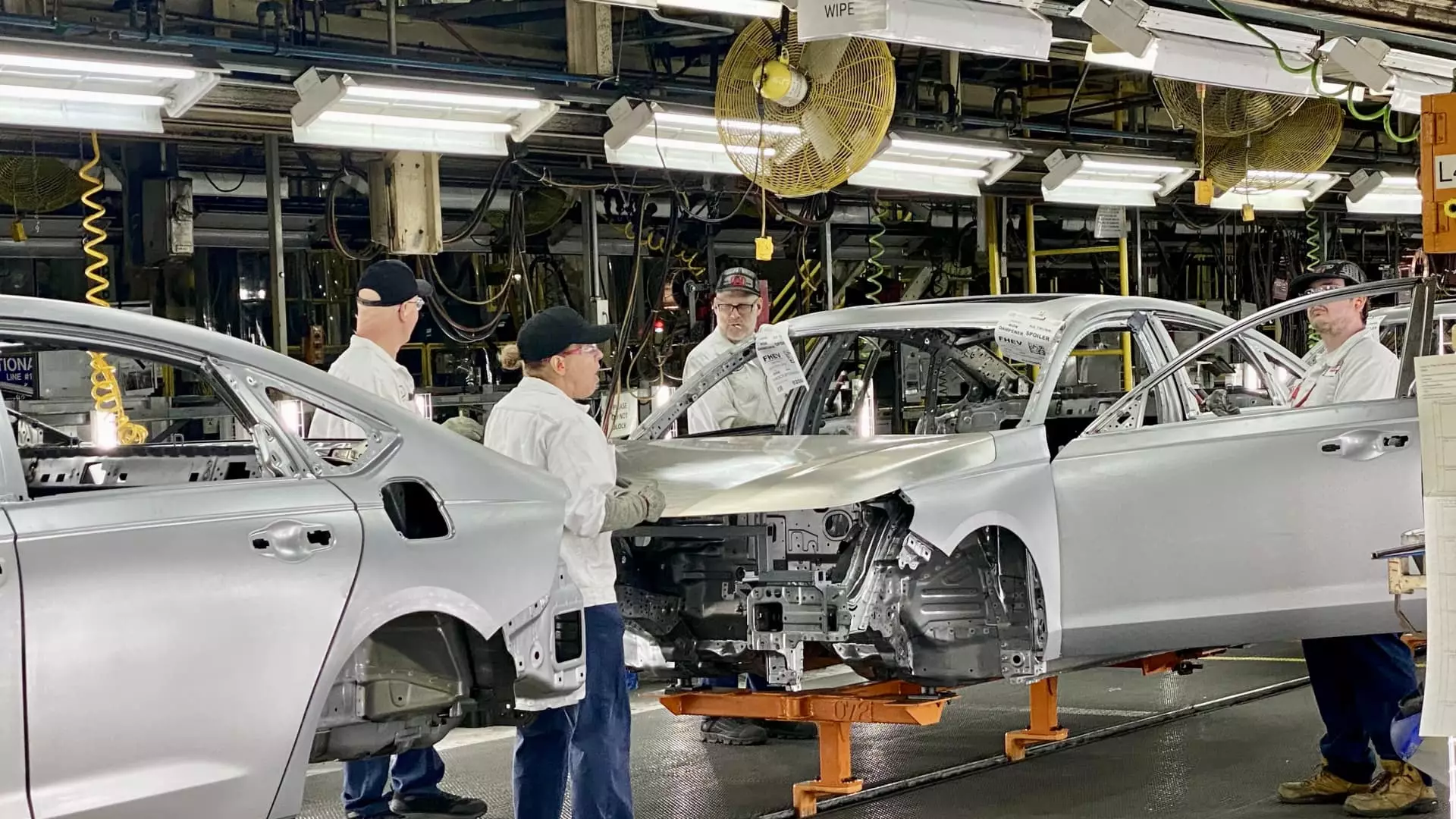In recent years, the automotive manufacturing landscape has experienced a remarkable shift, particularly with the rise of electric vehicles (EVs). A key player in this transformation is Honda Motor Co., which is boldly launching a new era of manufacturing at its historically significant site in Marysville, Ohio. This $1 billion investment marks a pivotal turn in Honda’s strategy, revealing the company’s commitment to becoming a leader in EV production on a global scale.
The investments Honda is making in Ohio represent more than just financial expenditure; they signify a comprehensive reimagining of the automaker’s operational philosophy. The establishment of six massive “giga presses” within the manufacturing ecosystem not only aligns Honda with contemporary production trends introduced by companies like Tesla but is also emblematic of a significant technological shift. The decision to base these upgrades in Ohio is particularly noteworthy, as such initiatives typically originate from Japan, Honda’s homeland. This localized approach illustrates the significance of the Ohio facility in Honda’s overall manufacturing strategy.
The investments come at a time when the U.S. automotive sector is under pressure to increase domestic production capabilities due to concerns surrounding potential trade tariffs and the overarching push from the Biden administration to on-shore manufacturing. Honda’s response to these pressures is emblematic of a broader trend in which automakers are reevaluating their manufacturing strategies to enhance resilience and flexibility in the face of external challenges.
Honda’s Marysville facility is set to undergo transformative changes that will allow it to produce a diverse range of vehicles, including traditional internal combustion engines, hybrids, and fully electric models, all from the same assembly line. This flexibility positions the Ohio site not only as a cornerstone for Honda’s U.S. operations but also as a potential leader in EV manufacturing. Mike Fischer, Honda’s North American lead for battery-electric vehicle projects, emphasizes that this EV hub will set new standards for the industry, both in terms of technology and manufacturing processes.
Central to this innovation is Honda’s intention to establish an integrated manufacturing environment. By introducing the gigacasting technology, Honda aims to significantly reduce manufacturing costs while enhancing the speed and efficiency of production. These heavy-duty machines are capable of creating large-scale components in a single casting process. This technology not only aligns with current industry advancements but also positions Honda to meet the growing demand for EVs more effectively.
The investments made in Ohio extend beyond just the integration of new technologies. They also encompass the introduction of sustainable manufacturing practices designed to minimize environmental impact. Honda’s commitment to sustainability is indicated by its goal of achieving zero emissions by 2050 and transitioning to exclusively selling zero-emission vehicles by 2040. This aligns with rising consumer expectations for environmentally responsible practices in the automotive sector.
The forthcoming introduction of the all-electric Acura RSX crossover represents a critical milestone for Honda, not only marking its entry into the electric vehicle market but also reinforcing its dedication to sustainability through advanced manufacturing processes. For the new electric models, Honda will capitalize on existing resources and infrastructure, such as aluminum production facilities nearby, thus optimizing operational efficiency.
While Honda had been slower to enter the EV market compared to competitors, the company’s extensive investments in Ohio signal a strategic adaptation to shifting industry dynamics. The decision to conduct substantive manufacturing changes in Ohio rather than Japan reflects an evolving perspective on global manufacturing practices. As the demand for EVs continues to grow, Honda’s strategy to innovate in Ohio presents a model that could inspire other manufacturers in the sector.
Moreover, Honda’s approach to manufacturing incorporates modernizing assembly techniques to enhance production efficiency. The integration of flexible manufacturing cells allows for greater versatility in addressing production hiccups without disrupting the entire assembly process. This adaptation is especially crucial in an era where consumer demand for rapid vehicle availability is rising.
Honda’s substantial investment in Ohio marks a critical juncture not just for the company, but also for the U.S. automotive industry as a whole. By evolving its manufacturing processes and committing to sustainability, Honda is positioning itself to successfully navigate the challenges of the electric vehicle market. As the company progresses towards its ambitious goals, its efforts in Ohio will undoubtedly be a focal point of its strategy, setting a precedent that may steer the entire industry toward a more sustainable and technologically advanced future. Through these initiatives, Honda exemplifies how traditional automakers can adapt and thrive in a rapidly changing landscape, possibly redefining the future of automotive manufacturing.

